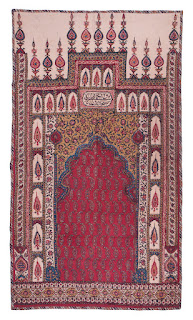Technology can effectively bridge the gap between museums and younger audiences to create seamless experiences that imitate ordinary interactions by adapting and enhancing the same tools that the younger generation uses on a regular basis
Technology can help bridge the gap between museums and the younger generation since their lives are constantly influenced by the digital world. Museums can create seamless experiences that imitate ordinary interactions by adapting and enhancing the same tools that the younger generation uses on a regular basis. Along the same lines, technology allows museums to boost audience participation by using gadgets that are already in use.
 |
| Holographic table at MAP |
Technology also helps museums bring to life their ideas and the creative ways in which they wish to engage the audience. For example, the Museum of Art & Photography (MAP), one of the first private art and photography museums in Bengaluru, collaborated with BrandMusiq to give the brand a distinct sonic identity through its MOGO or ‘musical logo’. MAP’s sonic identity is inspired by the aim to bridge the gap between the past and the present, the classical and the modern, and the conventional and the contemporary.
These tools make art and history more accessible while making the museum more accessible to people with disabilities such as hearing loss, vision impairment, Alzheimer's disease, and Autism Spectrum Disorder.
MAP’s involvement in the confluence of art and technology makes for a refreshing change. MAP and Accenture Labs collaborated to create India’s first conversational digital persona in M.F. Husain. The viewers can interact with the artists with questions on his early life, career and family. The usage of speech synthesis software and extensive research on the artist makes for an engaging interaction.
| Husain’s holographic avatar, as part of MAP’s collaboration with Accenture India |
The virality of different kinds of technology and their reception by the masses help museums understand the kind of devices to use and how they can be made increasingly accessible to the audience. Haptic interfaces, iPads, touch screens, and live screenings are a few such tools that engage the audience and help museums reach out to them virtually without losing their interest.
 |
| Kalamkari Prayer Mat, 1850s, Cotton, natural
dyes, Machilipatnam, Andhra Pradesh, India, TXT.0021 |
In another instance of a technology-focused initiative, MAP Academy, the educational vertical of MAP Bengaluru, collaborated with Microsoft to develop the platform INTERWOVEN as a part of Microsoft’s AI for Cultural Heritage initiative. This project is rooted in developing the digital recreation of the histories of South Asia through textiles, making it more accessible and inclusive for a global audience. Viewers sitting anywhere in the world can find connections between artworks and textiles, cultures and histories through this platform. And that really is the magic of integrating the use of technology in the arts and museums. It allows for a wider and more inclusive reach, as well as a greater participation by young audiences; it allows the museum to become an institution of the future.
Technology can be a great tool for expanding audiences and driving engagement, however it must be used strategically. It’s more about determining what service(s) they are providing, who it will serve, and how the audience will benefit from the experience rather than adopting technology for the sake of incorporating technology.
Please share this article using the social media widgets at the bottom and do subscribe to receive regular updates from Art Scene India.
To contribute articles, please get in touch at artsceneinfo@gmail.com